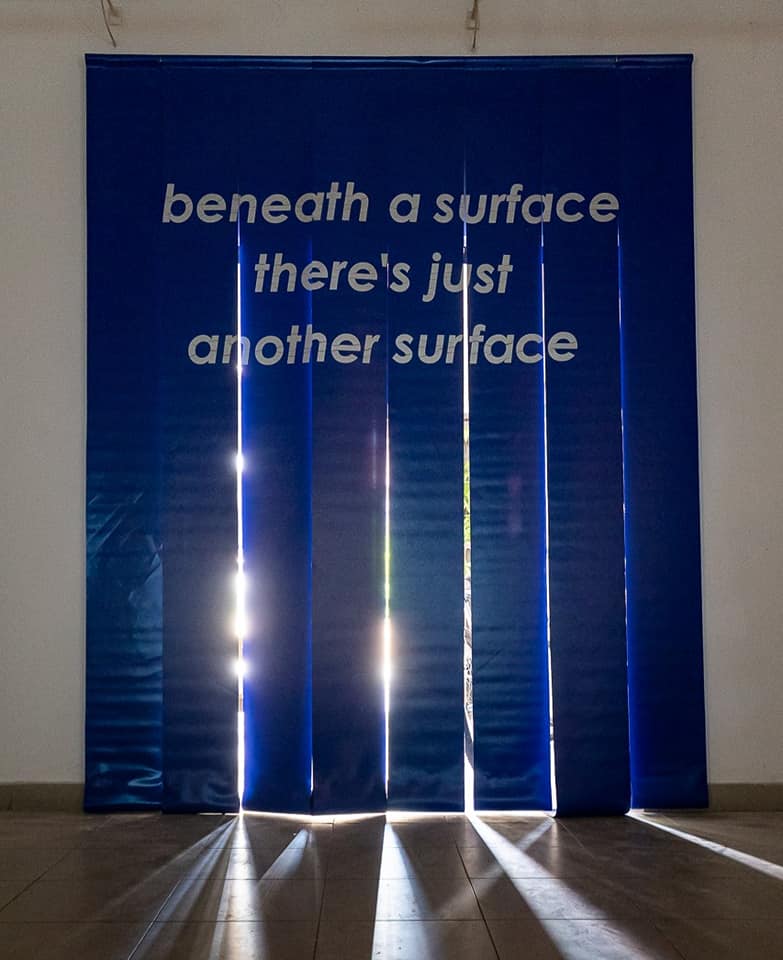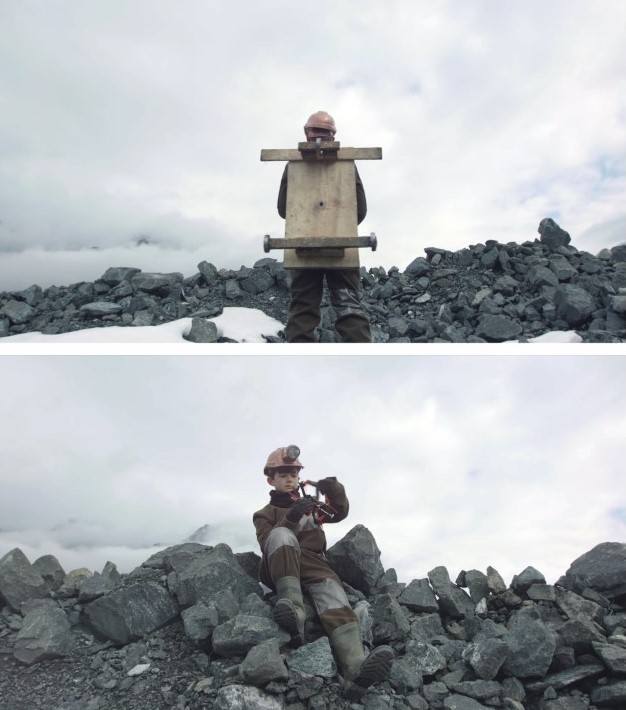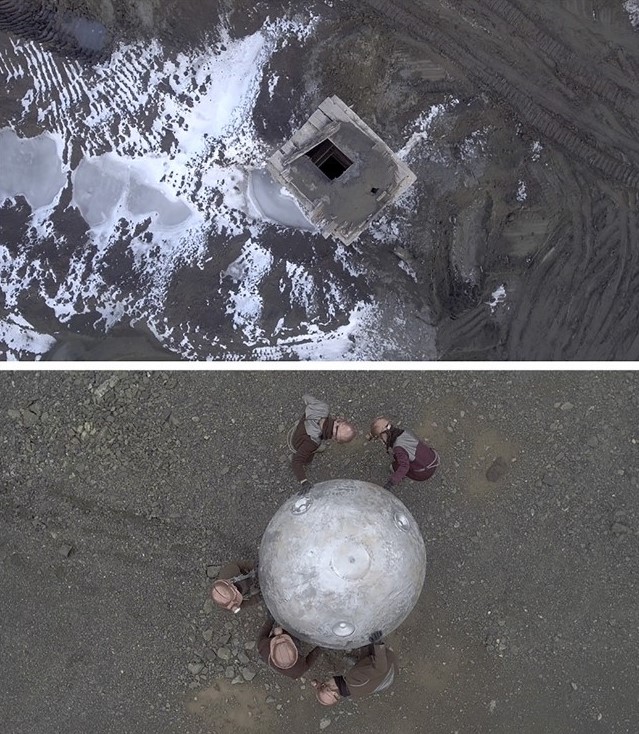Artist: Driant Zeneli
Title: The Trilogy: Beneath a surface there’s just another surface
Venue: National Gallery of North Macedonia
Curator: Ana Frangovska
The exhibition The Trilogy: Beneath a surface, there’s just another surface is a multimedia and interdisciplinary project by a well-known Albanian artist Driant Zeneli, which consists of three videos (installation), drawings, ready-made objects, and installations. The element that connects the whole characters in the films is the mineral chrome. In one of the video works titled It Would Not Be Possible to Leave Planet Earth Unless Gravity Existed, Zeneli works with the idea of the utopias and dystopias from the past, but from the present too.

He speaks about the idealism and the promise for a better future in the old communist system versus the obvious failures for reaching it, opposing it to the ideas, wishes, and failures of a single man, Mario, a contemporary of the artist, who wants to fulfill his desires and fly in outer space. The location is an old factory—Metallurgical Complex “Steel of the Party” in Elbasan, built-in 1962. It was a relic and a sign of political comeback following a stand-off with the Soviet Union—of the newly minted alliance between the Communist Party of China and the Party of Labour of Albania.

Abandoned architecture has always been the choice of scenography in Zeneli’s films, and was also used as a place of action in the second video And Then I Found Some Meteorites In My Room in which through the two main characters—Bujar and Flora (chrome collectors, but actually a nurse in the factory and a DJ), the artist deals with the issues of reaching infinity and imagining a better future, despite all the pessimism of contemporary society, cleverly playing on the very border between the real and fictional. Trans-history, politics, the demons from the past, criticism, fantasy, future, and dreams are just some of the ideas incorporated in the third part of the trilogy—Maybe the cosmos is not so extraordinary. Here the artist talks about one of the most important industrial and economic activities of his country, chrome mining, and the action happens in the Bulqizë mine, located in central Albania. Here Zeneli invents a fantastic narrative about the whole process of this activity seen with the help of a cosmic capsule, found by a group of teenagers, while in a parallel duration there is an echo of the voices of Flora and Bujar, the characters from the previous film, like a successive contrasting narration of the infinity. The moving image installations are followed by visual descriptors like drawings—a literary journey from Hysenbegas’s book (Towards Eridan’s Epsilos) published in 1983, robotic hands made from chrome, a piece of chrome mineral, etc.


The redefinition of the idea of failure, utopia, and dream stands at the core of Zeneli’s research, as elements that open up possible alternatives. In his films, power and history are interlaced with individual narratives, giving rise to utopias that subvert the natural order of things. The creative act feeds on unplanned encounters and the relationship with the architectural heritage of places.









Zeneli uses his films as a material to sculpt place and time. The performances take the form of participatory interventions, during which the artist co-creates the meaning of the work with the spectators. The element of gravity resonates throughout the artistic production, be it films, drawings, or happenings, in a constant attempt to detach himself from the earth, to play with his own limits.
Driant Zeneli (1983, Shkoder, Albania)In 2019 he represented the Albanian Pavilion at the 58th International Venice Biennale.
Main exhibitions: Manifesta Biennial 14, Pristina (2022); Teatrino Palazzo Grassi, Venice, (2021); 39th EVA International Biennial, Limerick (2020); National Gallery of Republic of Kosovo (2019); Sharjah Art Foundation, Film Platform, (2019); Latvian Centre for Contemporary Art, Riga (2019); Autostrada Biennale, Prizren, of Republic of Kosovo (2019); GAMEC, Bergamo, (2019); Mostyn Gallery, Wales, UK (2017); MuCEM, Marseille, (2016); Centre Pompidou, Paris (2016); GAM, Turin (2013); ZKM, Karlsruhe (2012); MUSAC, Castilla León. Spain, (2012); National Gallery of Tirana, (2008).

